How We Closed the Profitability Gap by Talking to Our Logistics Data
Stop guessing. In a game of minutes and margins, the platform that understands its data best will win. Traditional dashboards only show you the problem; they don't give you the solution. See how teams are using conversational AI to move beyond static reports, pinpoint the real bottlenecks, and turn data into immediate, actionable strategy.

Pin Chang
Updated: Oct 24, 2025
Published: Oct 24, 2025
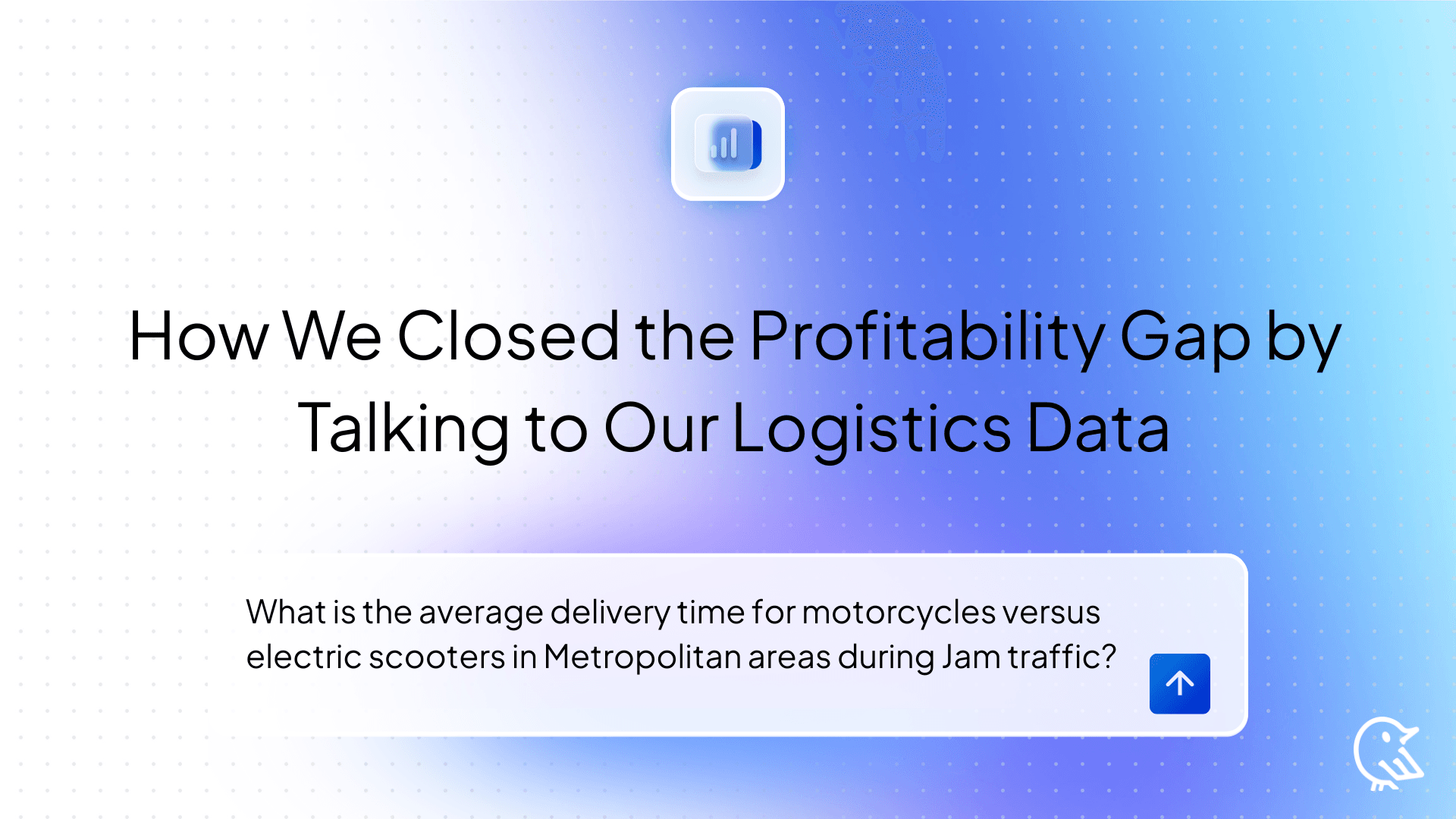
In the hyper-competitive world of logistics, victory is measured in minutes and margins. Every delivery platform is in a constant race against the clock, traffic, and customer expectations. To navigate this complex landscape, we've armed our operations teams with dashboards - beautiful, intricate displays of our logistics performance.
We build our dashboards to give us a bird's-eye view, starting with the essentials:
1. What is our overall performance at a glance?
At the top, we showcase our Key Performance Indicators (KPIs) that tell us whether we're winning or losing: Average Delivery Time (minutes): Our North Star metric. Improvement in Average Delivery Time (%): Tracks our operational progress. Total Deliveries: Reflects overall business volume. Average Driver Rating: A live indicator of customer satisfaction.
We also include a few charts to provide a clear, at-a-glance view of overall performance.
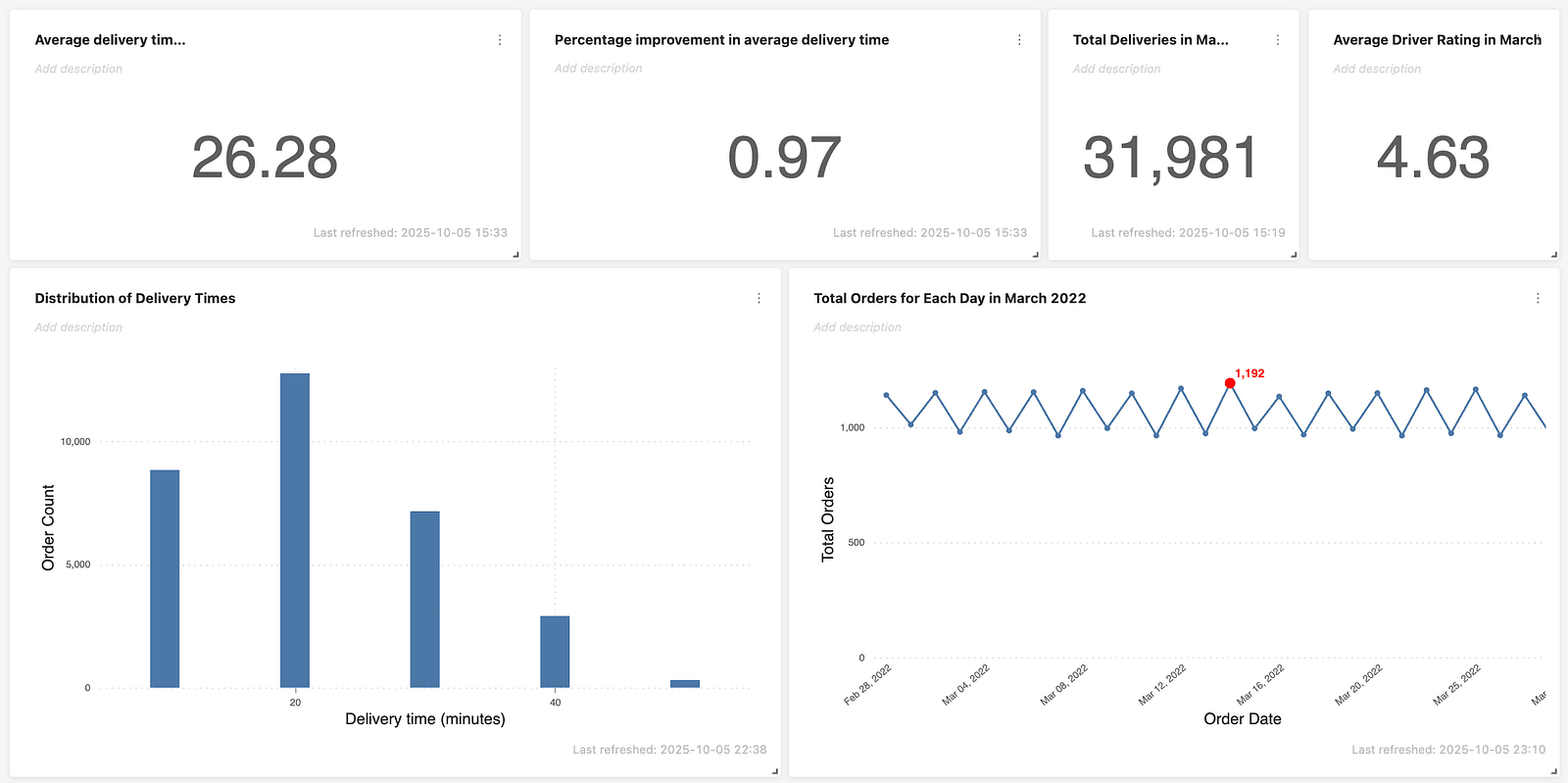 These numbers are vital. They tell us if we're having a good day or a bad day. But they don't tell us why.
These numbers are vital. They tell us if we're having a good day or a bad day. But they don't tell us why.
2. Where are the biggest delays in our process?
To dig deeper, we looked at average delivery time by traffic, weather, and day of the week. The data shows that deliveries take the longest when the traffic is jammed and the weather is cloudy. From the daily chart, Fridays and Sundays are the busiest, which aligns with the traffic heat map showing heavier congestion on those days.
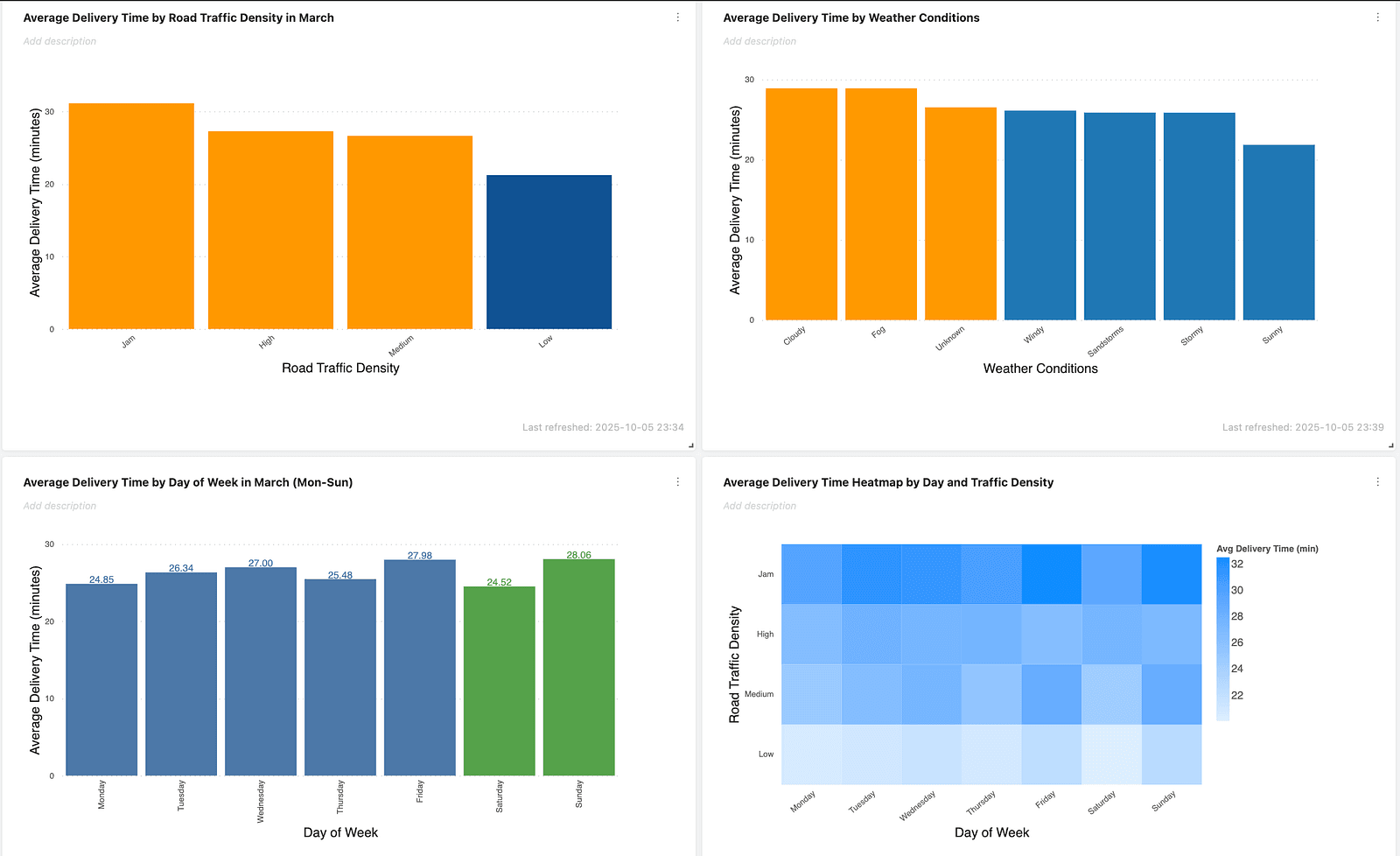 This is where the traditional dashboard hits a wall. It has expertly shown us a problem we likely already suspected. Our data confirms: traffic and bad weather make deliveries slow.
Now what? The dashboard has no answer. It's a dead end.
This is where the traditional dashboard hits a wall. It has expertly shown us a problem we likely already suspected. Our data confirms: traffic and bad weather make deliveries slow.
Now what? The dashboard has no answer. It's a dead end.
The Breakthrough: Asking Your Data "Why?"
The limitation of a dashboard is that it's a monologue. It presents facts, but you can't interrogate them. To find real, actionable insights, you need a dialogue. This is where conversational AI tools like Wren AI are changing the game. Instead of just viewing the chart, your operations manager can now directly ask the critical follow-up questions that lead to breakthroughs. Let's revisit our dashboard, but this time, with Wren AI.
Scenario 1: The Traffic Jam Bottleneck
Your dashboard clearly shows that "Jam" traffic is a performance killer. An operations manager sees this and, instead of just sighing in frustration, they turn to Wren AI and ask:
"What is the average delivery time for motorcycles versus electric scooters in Metropolitan areas during Jam traffic?"
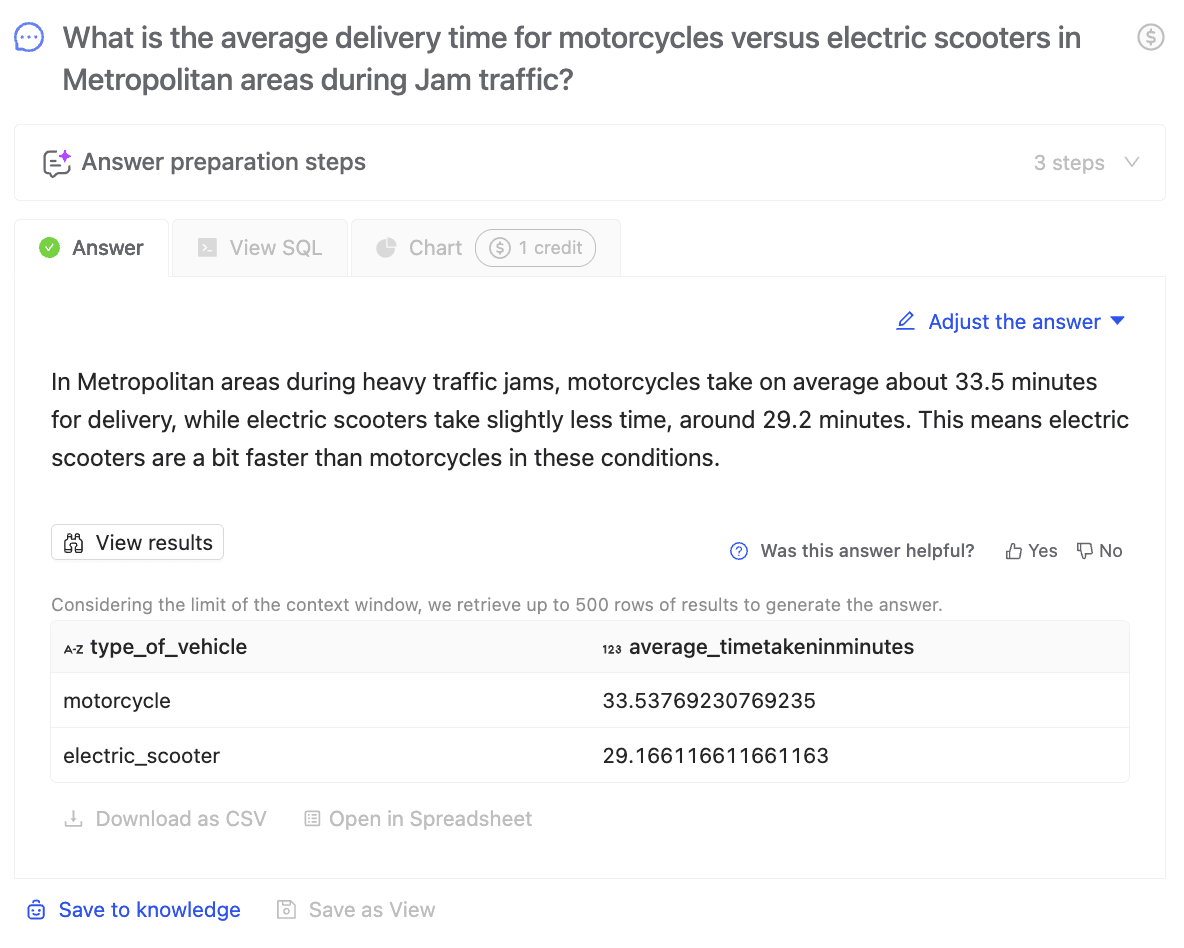 In seconds, Wren AI analyzes the data and provides an insight that was impossible to see on the original chart: Electric scooters are 12.8% faster than motorcycles in Metropolitan areas during traffic jams.
In seconds, Wren AI analyzes the data and provides an insight that was impossible to see on the original chart: Electric scooters are 12.8% faster than motorcycles in Metropolitan areas during traffic jams.
The Breakthrough: The problem isn't just the traffic; it's the vehicle type's effectiveness within that traffic. The resulting action is clear and immediate: start a pilot program to prioritize scooter dispatch in high-density areas during peak hours.
Scenario 2: Decoding Driver and Fleet Performance
Your dashboard has a section dedicated to driver and fleet metrics, helping you answer the question:
3. How is our driver and fleet performance?
To evaluate the efficiency and quality of your delivery partners and their vehicles, we compared performance across vehicle types, analyzed the relationship between delivery time and driver rating, and examined delivery times by city
. Driver and fleet performanceThe results show that driver ratings don't seem to have much impact on delivery time. We also noticed that deliveries in urban zones are about 16% faster than in metropolitan zones. While the exact reason isn't clear, we can consider several possible explanations for this difference
With a conversational tool, you can test those hypothesis instantly. A city manager can asks Wren AI:
Driver and fleet performanceThe results show that driver ratings don't seem to have much impact on delivery time. We also noticed that deliveries in urban zones are about 16% faster than in metropolitan zones. While the exact reason isn't clear, we can consider several possible explanations for this difference
With a conversational tool, you can test those hypothesis instantly. A city manager can asks Wren AI:
"For the urban zone, show me the correlation between the time that take to delivery and the waiting time."
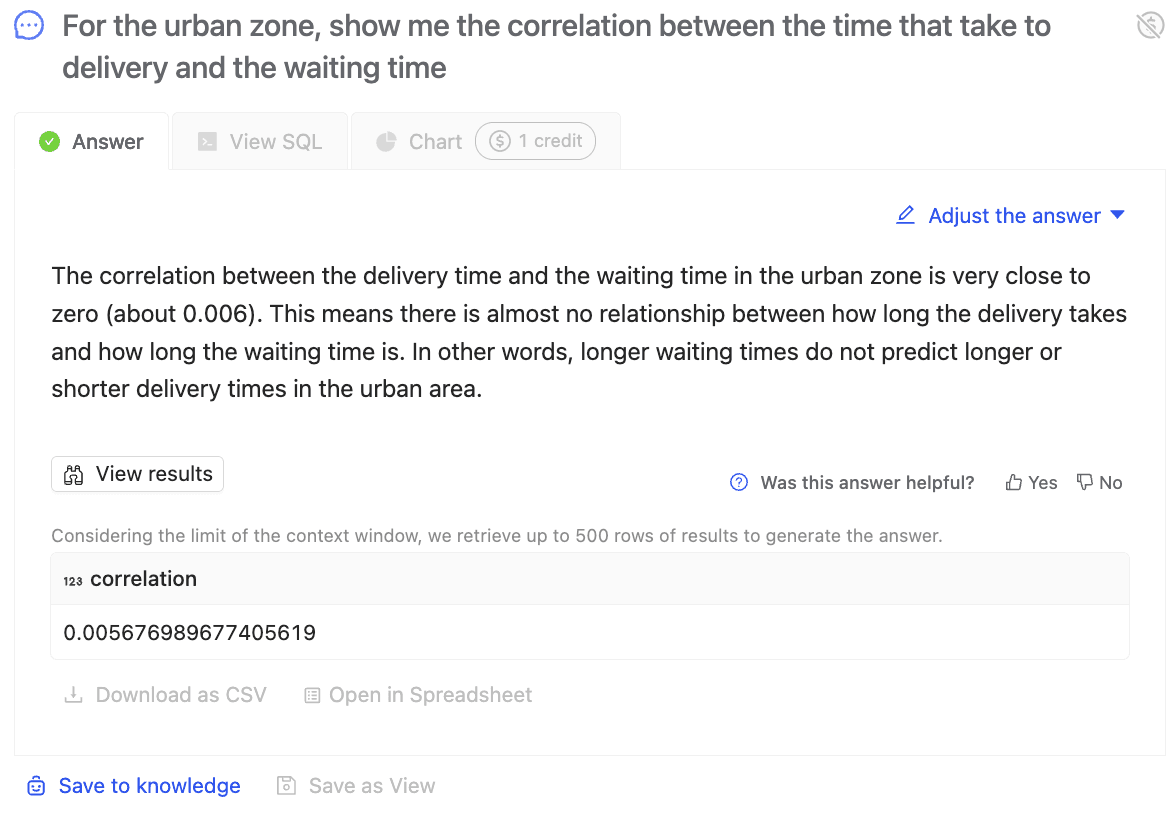 Puzzled by the lack of correlation, the city manager decides to look at the problem from a different angle: customer behavior.
Puzzled by the lack of correlation, the city manager decides to look at the problem from a different angle: customer behavior.
"What is the breakdown of order types for our Urban zone compared to the faster Metropolitan zone during peak meal hours?"
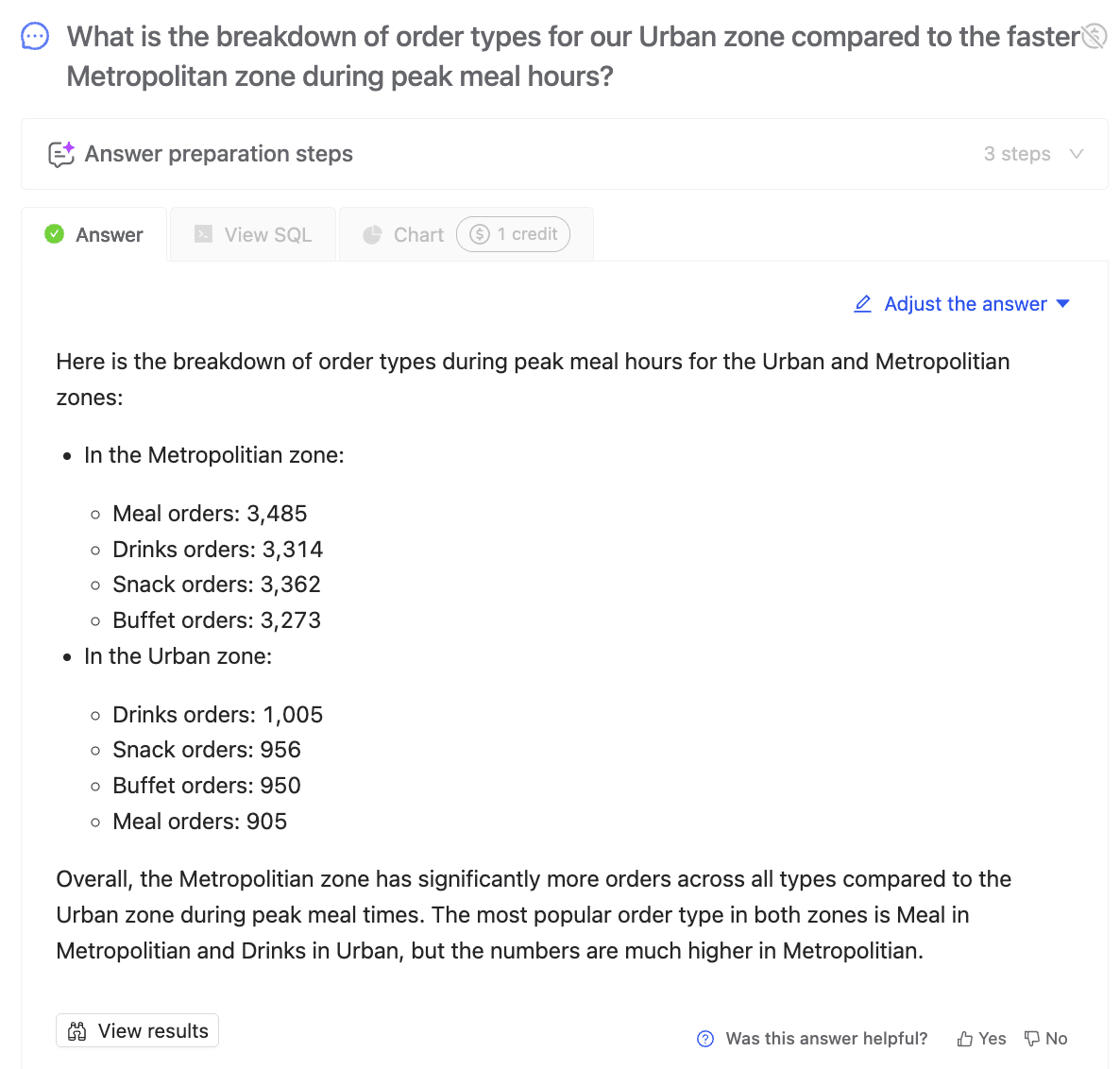 Wren AI generates a comparison that reveals two completely different worlds. In the Urban zone, people have easier access to food, so many orders are small items like drinks or snacks. In contrast, in the Metropolitan zone, people rely more on food delivery for full meals, often after long commutes or work hours.
This is the thread to pull. The manager continues the conversation:
Wren AI generates a comparison that reveals two completely different worlds. In the Urban zone, people have easier access to food, so many orders are small items like drinks or snacks. In contrast, in the Metropolitan zone, people rely more on food delivery for full meals, often after long commutes or work hours.
This is the thread to pull. The manager continues the conversation:
"What is the average delivery time for a single 'Snack' or 'Drink' order in the Urban zone versus a single 'Meal' order in the Metropolitan zone?"
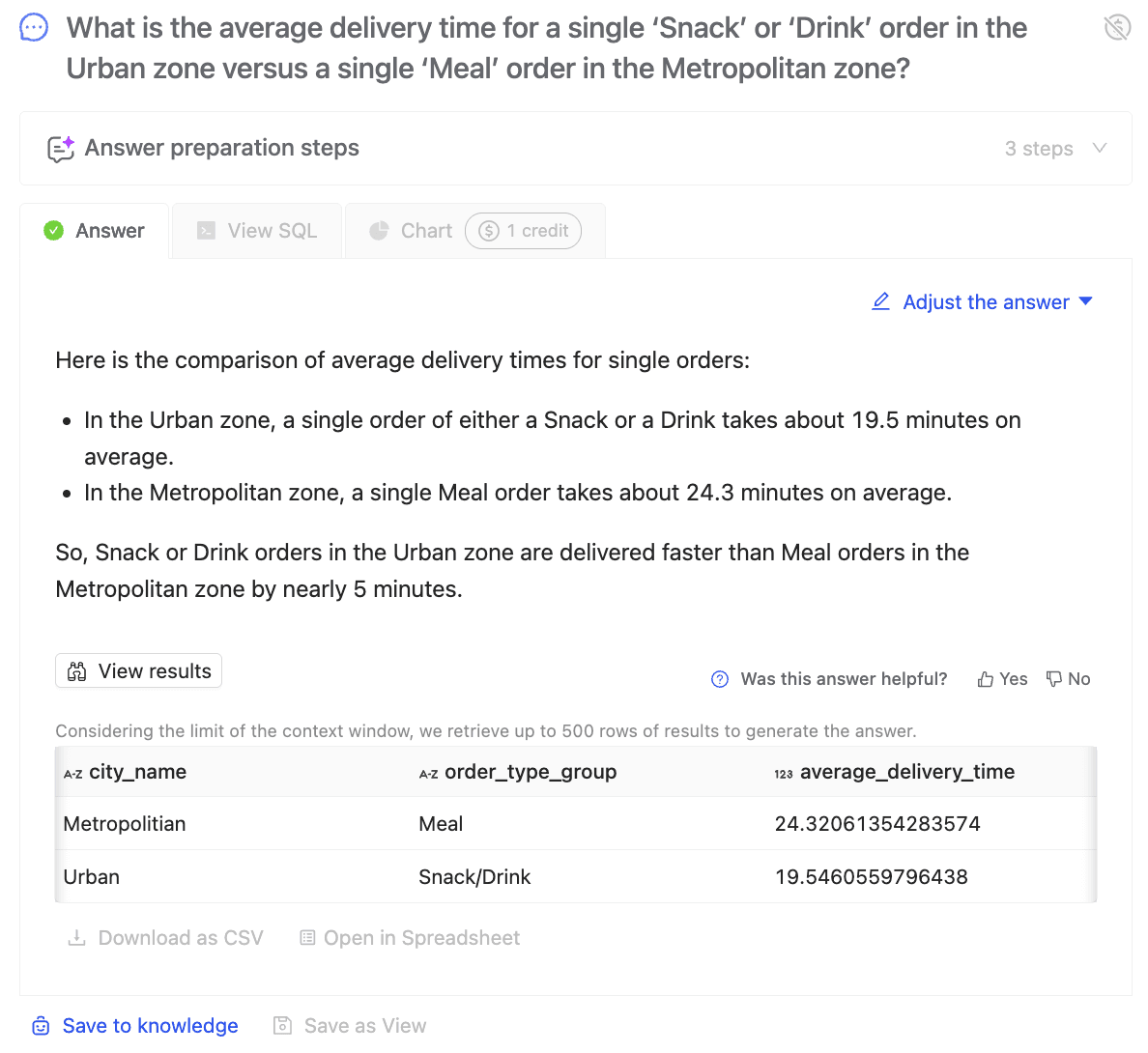 The small orders in the Urban zone were, on average, faster than the large meal orders in the Metropolitan zone. Yet, the Urban zone was known to be less profitable and an operational headache. The dashboard was showing fast delivery times, but the business metrics told a different story.
The city manager realized the problem wasn't about speed it was about value and efficiency. They needed to understand the economics of each delivery trip. They pivoted with a new question:
The small orders in the Urban zone were, on average, faster than the large meal orders in the Metropolitan zone. Yet, the Urban zone was known to be less profitable and an operational headache. The dashboard was showing fast delivery times, but the business metrics told a different story.
The city manager realized the problem wasn't about speed it was about value and efficiency. They needed to understand the economics of each delivery trip. They pivoted with a new question:
"Compare the 'multiple deliveries' rate for 'Snack' and 'Drink' orders in the Urban zone against 'Meal' orders in the Metropolitan zone."
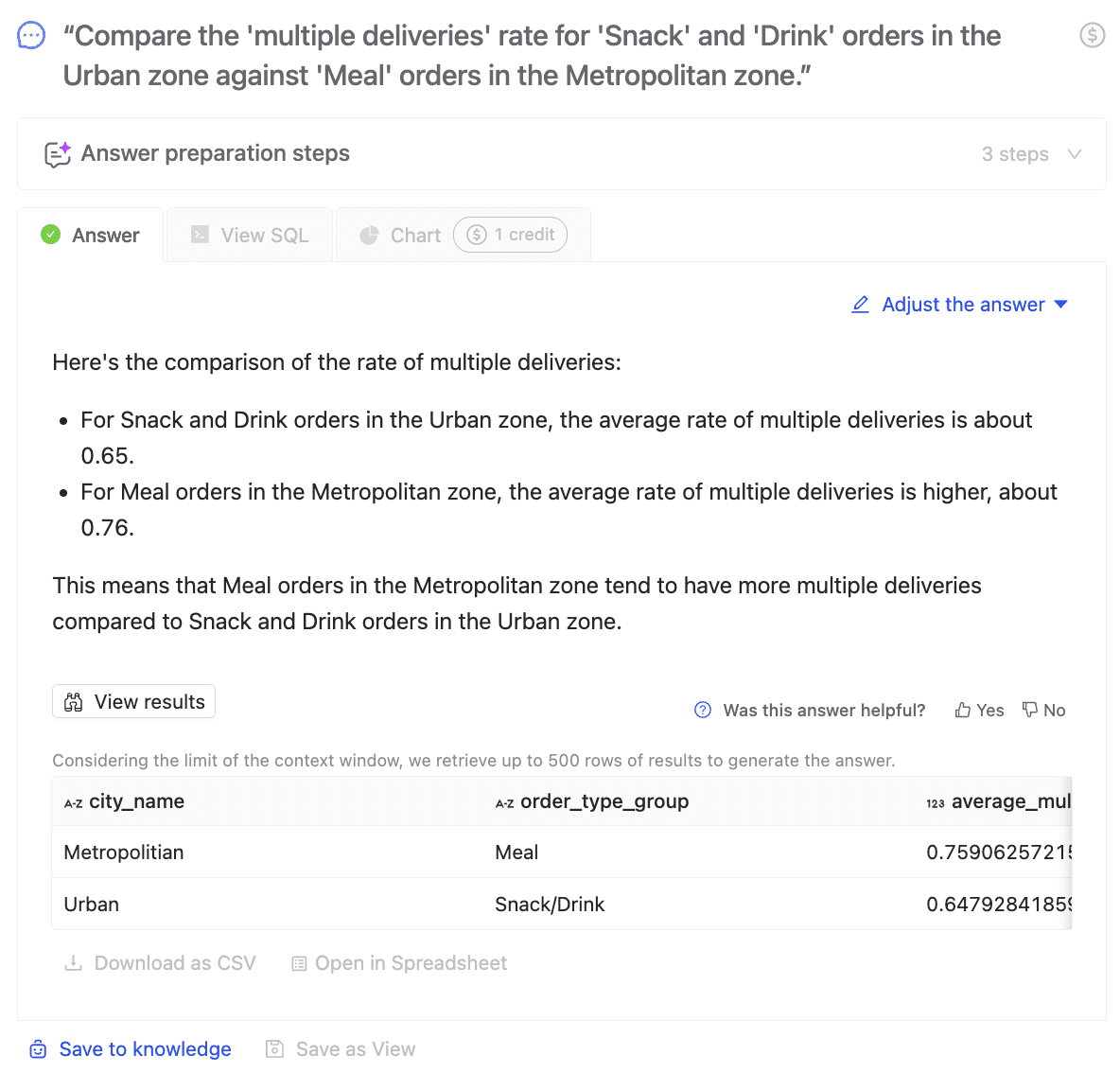
The Breakthrough: An 11-percentage-point gap in batching efficiency is a massive lever for profitability. It means that for every 100 delivery opportunities, the Metropolitan zone is successfully creating 11 more multi-order trips than the Urban zone.
The insight is that the Urban zone suffers from a persistent efficiency drag. Each successful "stacked" delivery dramatically lowers the cost-per-order and increases revenue per driver hour. The Metropolitan zone benefits from a powerful double effect: a higher batching rate on orders that already have a higher average value (Meal). The Urban zone has the opposite problem: a consistently lower batching rate on orders that are, by nature, low-value.
This seemingly small gap, compounded over thousands of orders a day, perfectly explained why the Urban zone was less profitable despite its faster individual delivery times.
This discovery gave the strategy team a clear, quantifiable goal: close the 11% efficiency gap. Instead of focusing on speed, they could now work on targeted solutions:
- Launching "add-on" promotions ("Add a cookie for $1") to increase the value and batching probability of small orders.
- Testing a more patient dispatching algorithm in the Urban zone that holds low-value orders for an extra 90 seconds to improve the chance of creating a stack.
From Being Informed to Being Empowered
Dashboards are essential for informing us about our performance. But information is not the same as insight.
Conversational AI tools like Wren AI empower your teams to move beyond the "what" and start asking "why." They turn every team member into their own data analyst, allowing them to investigate hunches, validate strategies, and find the hidden efficiencies that dashboards alone could never reveal.
In the food delivery industry, the company that can answer questions the fastest will win. The revolution isn't just about getting food to the door quicker; it's about getting insights to your team at the speed of thought.
Ready to transform how your organization accesses data? Request a demo or start your free trial at getwren.ai
Supercharge Your
Data with AI Today
Join thousands of data teams already using Wren AI to make data-driven decisions faster and more efficiently.
Start Free TrialRelated Posts
Related Posts
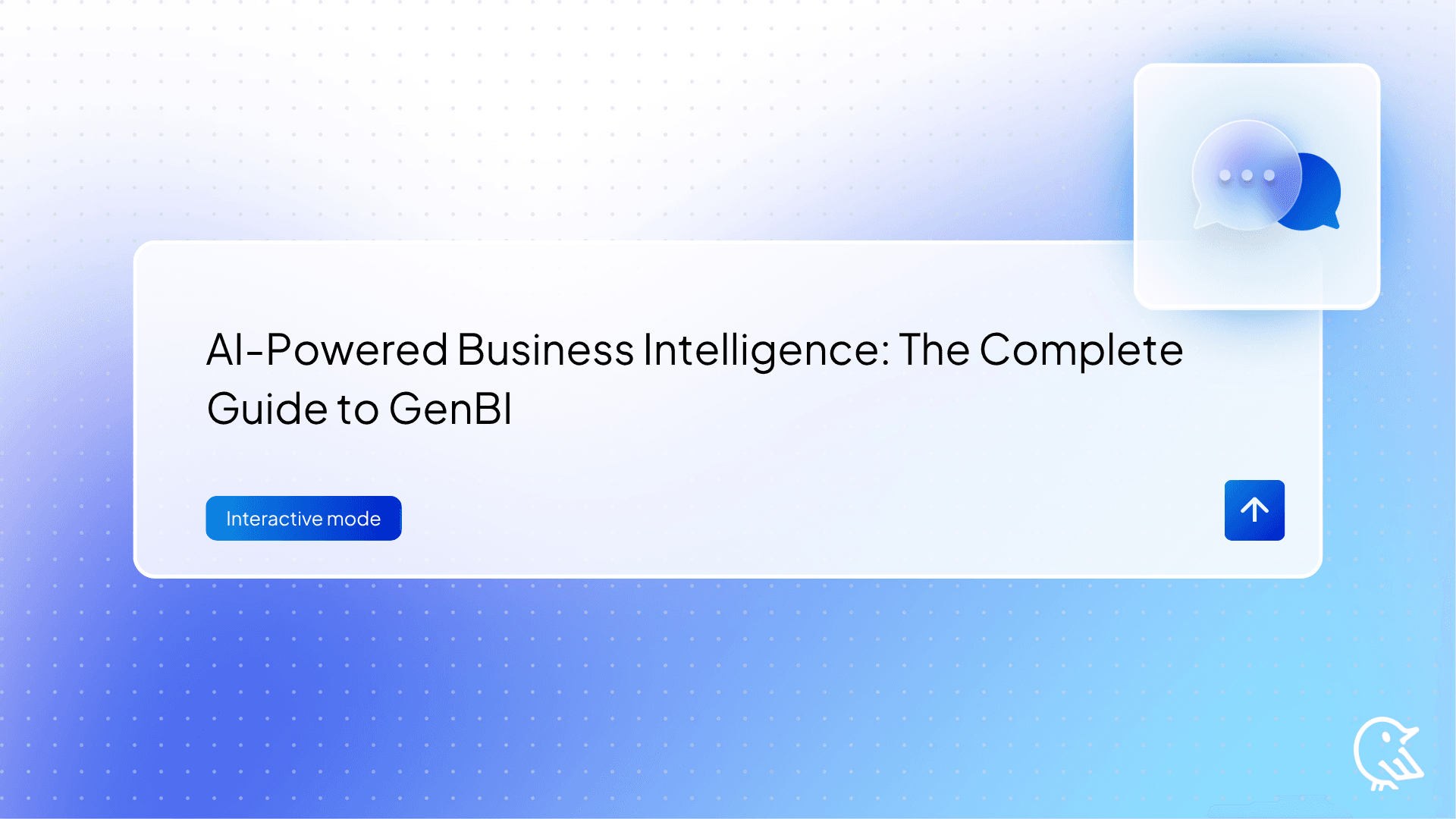
AI-Powered Business Intelligence: The Complete Guide to GenBI
Discover how Generative Business Intelligence (GenBI) powered by Wren AI is transforming data access with conversational AI, real-time insights, and intuitive decision-making tools for modern enterprises
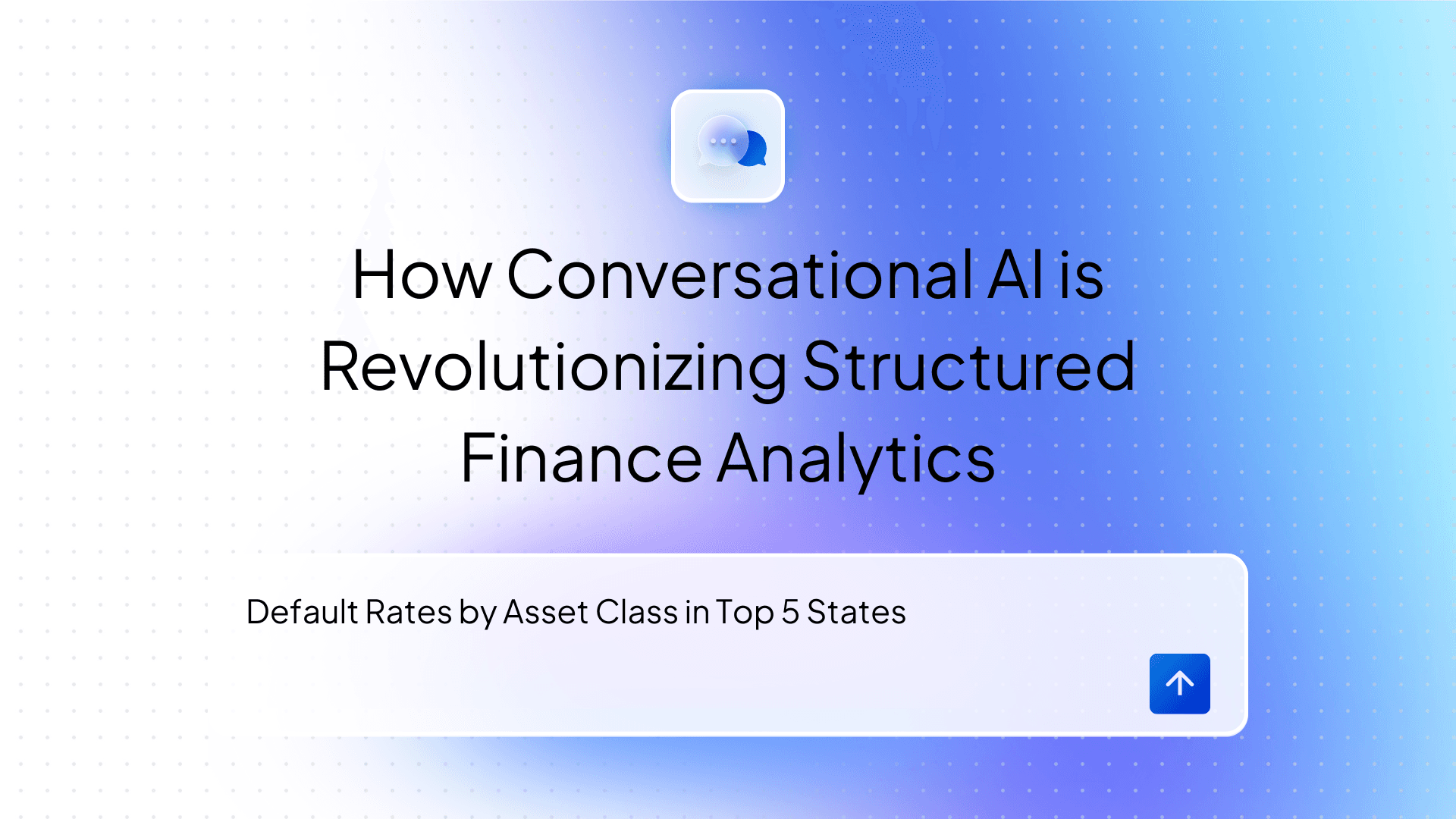
Beyond Dashboards How Conversational AI is Revolutionizing Structured Finance Analytics
How Wren AI transforms complex financial data into instant, actionable insights through natural language — no technical expertise required
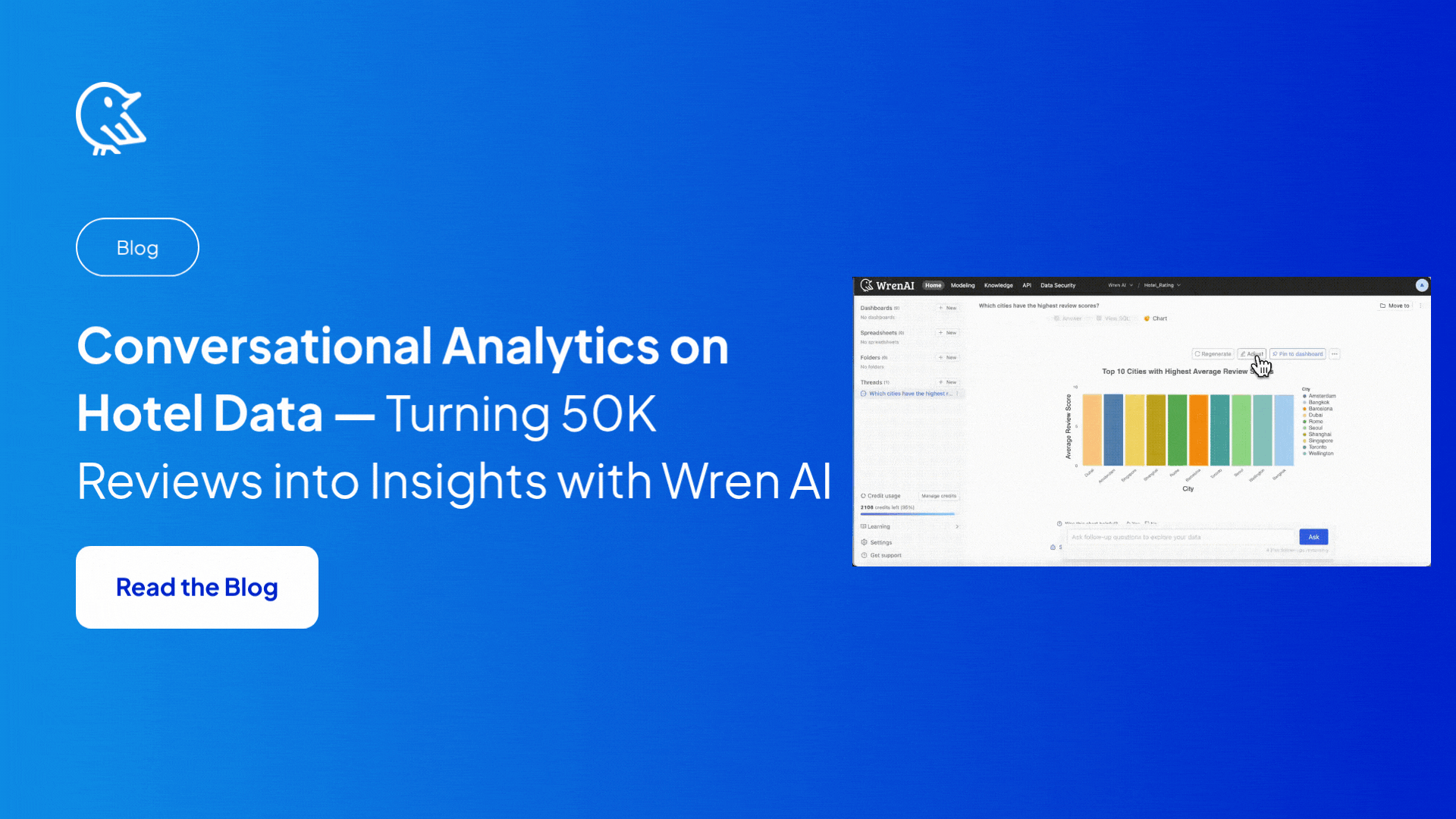
Conversational Analytics on Hotel Data-Turning 50K Reviews into Insights with Wren AI
No complex schemas. No SQL. Just your data - and instant answers. From Code Blocks to Conversations I recently came across a rich synthetic dataset from Kaggle that simulates the booking and review data of a global hotel platform.

